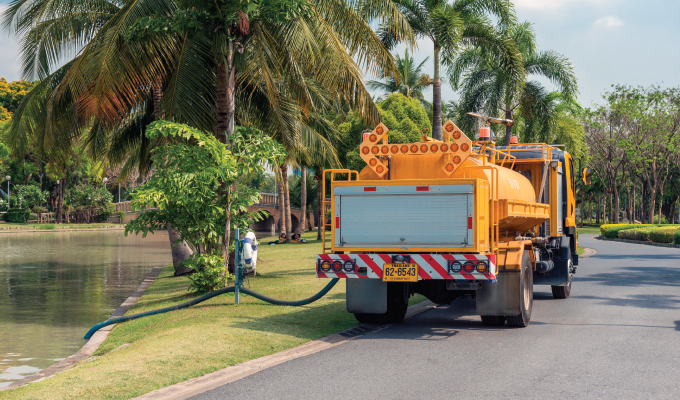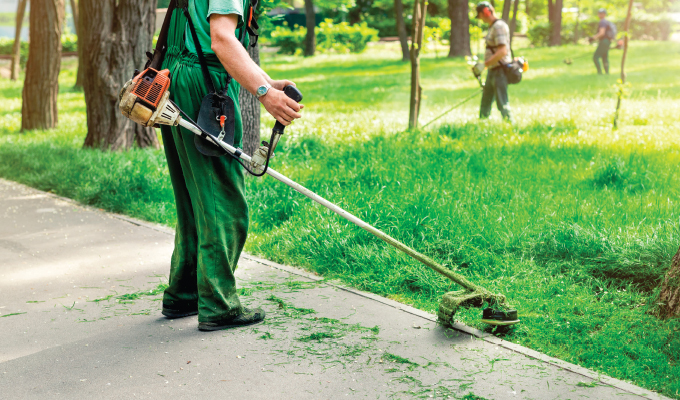Landscaping crews face the most risk for accident, injury, and even death when they are driving to the jobsite. Driving is the leading cause of death for workers in the US regardless of industry, and OSHA lists driving as a top concern for landscapers.
The risk of accidents doesn’t stop at your landscaper crews, though. You and the company face risk as well. When your employees have an accident, you pay for lost time, injuries, fines, and even court appearances. And if you haven’t had an accident yet, statistics say it’s only a matter of time.
Fortunately, you don’t have to suffer through high accident numbers. You can do something about it.
Let’s take a look at some of the most common driving risks your landscaping crews face and some ways that you can address these challenges to prevent accidents.
3 DEFENSIVE TECHNIQUES
Now that it’s clear your employees face risk, let’s cover how they can reduce their risk.
Your employees face all the same risks for an accident as a truck driver or bus operator. The problem is, they receive no special training. You need to educate your employees to perform the following three safe behaviors to reduce accidents.
1. Maintain a Safe Following Distance
If you teach your landscape crews to leave room in front of them, you can prevent up to 25% of your accidents and injuries. However, leaving room is a bit more complicated for your employees.
Your drivers are often behind the wheel of heavy vehicles or hauling equipment. This means they have increased weight and stopping distance compared to a regular van, sedan, or a pickup truck. This leads to rear-end collisions.
Rear-end collisions aren’t just fender-benders either. Rear-end collisions are the most common type of accidents. They are costly, often serious, and can even be fatal.
While most light-duty vehicles can be operated with a 2- to 3-second following distance, your employees need to leave at least a 4-second following distance.
These four seconds result in:
- Less accidents
- Less wear and tear on vehicles
- A smoother, stress-free ride
2. Roadside Safety
Oftentimes, your employees must pull over on a road in order to perform necessary work. This presents major risk. Accidents that happen while someone is pulled over are costly and often fatal.
To avoid having the vehicle struck or being struck themselves, your landscape crews should always follow these steps:
- Look Ahead.
Before pulling over, your crews should have a plan. They should look ahead and scan for risk before stopping. They should evaluate the area based on the risk of oncoming traffic and how much room they will have around the vehicle and themselves. - Park Defensively.
Your crews must position the vehicle in the most defensive, strategic position possible. They should only pick areas/shoulders that are wide enough to accommodate at least twice the vehicle’s width and sturdy enough to support the weight of the vehicle. Then, they should park leaving plenty of room between the vehicle and traffic. - Place Cones.
Depending on your industry, you may be required by law to use cone placement. Even if you are not, your crew should use emergency triangles or orange traffic cones to alert motorists of their stopped vehicle. These should be placed both in front of and behind the vehicle. - Use Caution Outside of The Vehicle.
When parked near a roadway, the most dangerous place to be is out of the car. Your employees must use caution when near the road. They should never text, talk on the phone, or be distracted from traffic in any other way. And they should never trust that other drivers are looking out for them.
3. Turning with a Trailer

Intersections are the most dangerous driving environment your drivers will face. There are other vehicles, fixed objects, changing traffic patterns, pedestrians, and cyclists to worry about. That risk, of course, carries over to turns.
Just like any accident, collisions during turns are 100% preventable. However, they come with added challenges for your landscaping crews. Your employees are often maneuvering larger vehicles or potentially vehicles hitched with a trailer.
To prevent turning accidents, jackknifes, and other incidents, your employees must:
- Look ahead 15 seconds as they approach the intersection; they need to scan the area for risk and check the status of the light
- Cover their brake and be ready to stop as they approach the intersection
- Look left, right, and left again before proceeding through an intersection
- Rock and roll in their seat before and halfway through a turn
- Ensure they have enough room to make the turn given their vehicle and/or trailer length
- Always communicate with 3 to 5 flashes of their turn signal before taking action
- Make turns going around 3 to 5 miles per hour
- Make squared left turns—that is, turn so that their arc makes a right angle rather than a sweeping arc or a straight line
- Make right turns close to the curb while still leaving room to avoid fixed object strikes
It is extremely important that you train your employees on how to maneuver these vehicles. They need hands-on practice in a controlled environment before heading out on the road.
TRAIN YOUR DRIVERS
If you have landscapers, you have professional drivers. However, just because someone has a clean driving record does not mean they are ready to get behind the wheel for your company. If you don’t train your employees to be defensive drivers, you face the risk of:
- Higher insurance premiums
- Higher accident rates
- Increased cost of loss
- Increased workers comp
- A fatal collision
These are all varying degrees of disaster for any organization. It’s time to do something about them.
If you invest in defensive driving training, whether you make it yourself or buy a pre-existing program, your efforts and resources can pay for themselves. You’ll save time and money while protecting your employees.
ABOUT THE AUTHOR
John Kuder is a senior instructional designer at Avatar Fleet, the creators of the non-CDL safety training course, The Fleet Safety Course. Find out more and access The Fleet Safety Course, visit go.avatarfleet.com/fsc-free-pass.




